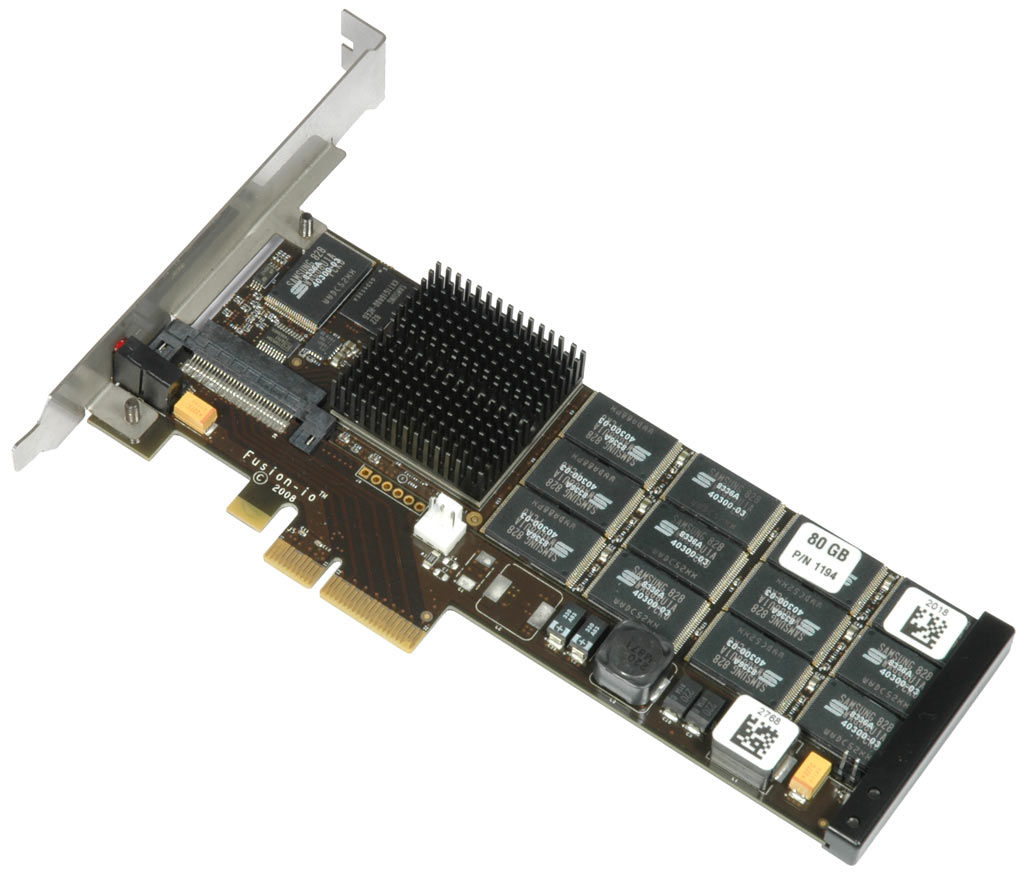Can The Flash-Based ioDrive Redefine Storage Performance?
Conclusion
Fusion-io did an amazing job with this product, which is the first flash SSD storage device to deliver truly revolutionary performance. Forget everything you know: this device is faster. Although we did not match the benchmark numbers we found in Fusionio’s data sheet, the 500 MB/s throughput and up to over 40,000 I/O operations per second are many times what hard drives, RAID arrays, and even existing flash SSD solutions are capable of delivering.
It’s Not A Drive, But It’s Amazing Storage
The ioDrive isn’t a classic drive as we know it, as it connects via x4 PCI Express. Thanks to this rather direct link, the ioDrive provides several times the bandwidth of Serial Attached SCSI or SATA. This, by the way, is still a reason why flash SSDs haven’t been completely embraced by the enterprise segment: there are only SATA drives available, and reliability is a rather large unknown that only time can make clear.
Reliability? Go Redundant
Maybe it helps that IBM decided to deploy the ioDrive into its enterprise server products. This validation may be the first of its kind. Hard drive makers are still very conservative about introducing flash SSD drives for the high end, as they and their customers don’t always trust the reliability of flash memory. We cannot make any conclusions about this item either, but Fusion-io provides its ioDrives at acceptable price levels (several thousand dollars maximum), making them a really attractive option considering the solid design and the possibility to even run them in RAID mode to be on the safe side.
Flexibility And Conclusion
You cannot yet exchange a PCI Express ioDrive on the fly, and you still cannot boot from it. Also, performance varies a bit depending on the capacity point you select. That said, the bang for buck here is so much better than what we’ve seen with other flash SSDs. It may even be possible to shut down entire racks within storage arrays after replacing them by an ioDrive. We haven’t even included hard drives in the benchmark charts, because they would hardly be visible on the I/O benchmark charts.
Get Tom's Hardware's best news and in-depth reviews, straight to your inbox.
It’s obvious that both the performance increases and power savings are significant enough to justify looking into this solution. We’re looking forward to seeing modified ioDrives that may also be capable of booting an operating system. Bottom line: if you need high performance storage for mission critical servers, this product is a must have on your options list.
